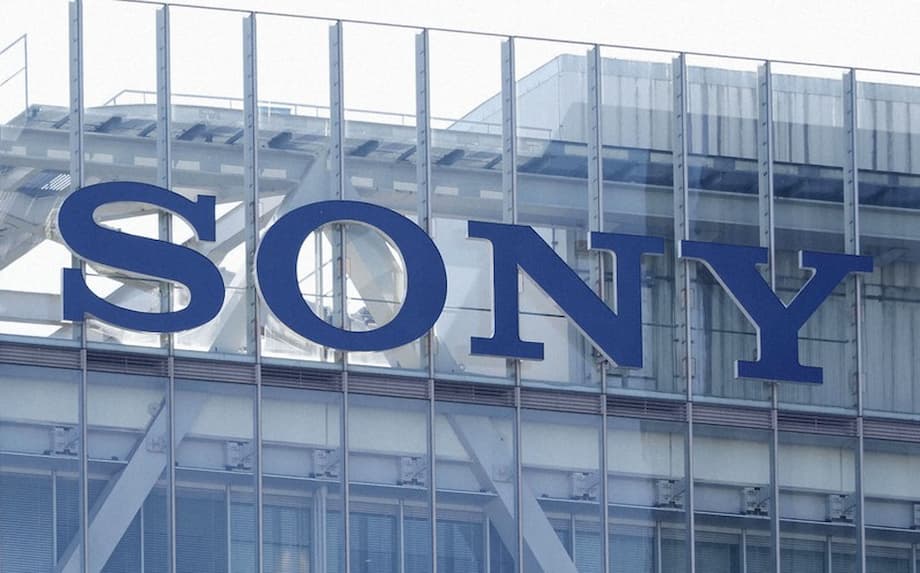Sony’s FeliCa Vulnerability: A Major Security Concern for Japan’s Infrastructure
In late August 2025, Sony Corporation publicly acknowledged a critical security vulnerability in older versions of its FeliCa contactless IC chips. These chips, a cornerstone of Japan’s transit cards and electronic payment systems, have been shipped in over 1.8 billion units since their introduction. The flaw, discovered by a Tokyo-based research group and reported through Japan’s Information-technology Promotion Agency (IPA), could allow attackers to bypass encryption and tamper with stored data on affected cards. While no cases of abuse have been detected so far, the revelation has sent ripples through Japan’s public transportation, payment, and identification infrastructure.
- Sony’s FeliCa Vulnerability: A Major Security Concern for Japan’s Infrastructure
- What Is FeliCa and Why Is It So Important?
- Details of the Vulnerability: What Went Wrong?
- Who Is Affected?
- Potential Risks and Real-World Impact
- Industry and Government Response
- Media Coverage and Public Perception
- Technical Background: Why Are Smart Cards Vulnerable?
- What Should Users Do?
- Broader Implications for Japan’s Cashless Society
- In Summary
What Is FeliCa and Why Is It So Important?
FeliCa is Sony’s proprietary contactless RFID smart card technology, first introduced in the late 1990s. It is widely used in Japan and several other Asian markets for secure transactions and authentication. FeliCa powers:
- Transit cards such as Suica and Pasmo, used by millions daily for trains and buses
- Electronic money cards like Edy and Nanaco
- Employee and student identification cards
- Access passes for secure facilities
The technology is embedded in both physical cards and mobile devices (such as smartphones with NFC capability). Its speed, reliability, and security have made it a trusted backbone for Japan’s cashless society and public infrastructure.
How FeliCa Works
FeliCa cards use radio-frequency identification (RFID) to communicate with readers. When a card is tapped on a reader, encrypted data is exchanged, allowing for quick authentication and payment. The security of these transactions relies on encryption keys stored within the chip, which are supposed to be inaccessible to outsiders.
Details of the Vulnerability: What Went Wrong?
The vulnerability affects certain FeliCa IC chips shipped before 2017. According to Sony’s official statement, specific operations—identified by external researchers—could allow data on these chips to be read or tampered with. Most critically, the encryption keys that protect FeliCa systems could be stolen, potentially enabling attackers to:
- Alter the balance or validity of transit cards
- Disrupt electronic payment systems
- Forge employee or student passes for sensitive facilities
Cybersecurity experts have described this as an “extremely serious problem” that undermines trust in the infrastructure supporting daily life in Japan. The flaw was confirmed in laboratory settings, but there have been no reports of real-world exploitation so far.
Discovery and Disclosure
A Tokyo research group discovered the flaw and reported it in July 2025 through the IPA, following Japan’s Information Security Early Warning Partnership Guideline. Sony confirmed the vulnerability after inquiries from Kyodo News and other media outlets. The company emphasized that the security of FeliCa-based services depends not only on the chip itself but also on the overall system architecture and backend monitoring.
Who Is Affected?
The vulnerability is limited to physical FeliCa cards produced before 2017. This includes:
- Transit cards (e.g., Suica, Pasmo)
- Prepaid electronic money cards
- Employee and student ID cards issued before 2017
Importantly, Mobile FeliCa devices—such as smartphones using Osaifu-Keitai (mobile wallet) services—are not affected by this vulnerability. Modern FeliCa chips shipped after 2017 are also considered secure.
Major FeliCa partners, including JR East (operator of Suica), NTT Docomo (iD payment service), JCB (QUICPay), and JR West, have issued statements assuring users that their products and services remain safe. They are working closely with Sony to monitor the situation and enhance security where necessary.
Potential Risks and Real-World Impact
While the vulnerability is technically significant, its real-world impact may be limited by several factors:
- The flaw has only been demonstrated in laboratory settings, not in actual attacks.
- Even if a card’s encryption keys are compromised, backend systems can detect and block suspicious cards.
- Service providers have robust monitoring and fraud detection mechanisms in place.
NTT Docomo, for example, emphasized its daily monitoring of the iD payment service and its ability to investigate and respond to any fraudulent use. According to a company spokesperson:
We monitor the iD service daily and if we detect any fraudulent use, we will investigate it individually and take appropriate action.
Nonetheless, the theoretical risk remains. If attackers were able to exploit the flaw at scale, they could potentially disrupt transit systems, electronic payments, or gain unauthorized access to secure facilities. This would have serious implications for public trust and operational reliability.
Industry and Government Response
Sony has been proactive in cooperating with service providers and public institutions. The company’s official guidance is for stakeholders to continue using FeliCa-based services based on information from their respective providers. Sony has not yet announced specific countermeasures, but a fundamental solution may require disabling all affected older cards—a massive logistical challenge given the number of cards in circulation.
Japan’s Information-technology Promotion Agency (IPA) played a key role in coordinating the disclosure and response. The agency’s guidelines for early warning and information sharing helped ensure that service providers were informed and able to assess the risk to their systems.
Statements from Major Partners
JR East, operator of the Suica transit card, and other major partners have reassured users that their systems remain secure. They have committed to working with Sony and relevant authorities to address any potential threats. According to industry analysis from At a Distance, the issue is largely theoretical and manageable at the system level:
Even if a card chip’s keys are compromised, it is easy to identify and block such cards on the system backend.
This layered approach to security—combining chip-level protection with backend monitoring—has so far prevented any known abuse.
Media Coverage and Public Perception
The vulnerability has received significant attention in Japanese and international media. Some outlets have been criticized for sensationalizing the risk, while others have focused on the technical details and practical implications. Technology blogs and industry analysts have pointed out that the vulnerability is not new to the security research community and that similar flaws have been found in other smart card systems worldwide.
There is also a broader discussion about the reliability of media reporting on cybersecurity issues. Some experts caution against alarmism, noting that the actual risk to consumers is low as long as service providers maintain robust monitoring and response protocols.
Technical Background: Why Are Smart Cards Vulnerable?
Smart cards like FeliCa rely on embedded microchips to store sensitive data and perform cryptographic operations. Over time, advances in hacking techniques—such as side-channel attacks and chip decapsulation—have exposed vulnerabilities in older chip designs. In the case of FeliCa, the affected chips were produced before 2017, before certain security enhancements became standard.
How Could Attackers Exploit the Flaw?
In theory, an attacker with physical access to a vulnerable card could use specialized equipment to extract the encryption keys and modify the card’s data. This could allow them to:
- Add value to a transit or payment card without authorization
- Forge access credentials for secure facilities
- Clone cards for fraudulent use
However, such attacks require technical expertise and equipment, and are unlikely to be carried out at scale without detection.
What Should Users Do?
For most consumers, there is no immediate action required. Service providers and card issuers are monitoring for suspicious activity and will notify users if any action is needed. If you use a physical FeliCa card issued before 2017, you may eventually be asked to replace it as part of a broader security upgrade. Users of mobile wallet services or newer cards are not affected.
Advice from Security Experts
Cybersecurity professionals recommend the following best practices:
- Monitor official announcements from your card issuer or service provider
- Report any suspicious activity or unauthorized transactions immediately
- Replace older cards if advised by your provider
As one cybersecurity analyst told Mainichi:
This is an extremely serious problem that undermines trust in infrastructure, but with proper monitoring and response, the risk to everyday users remains low.
Broader Implications for Japan’s Cashless Society
The FeliCa vulnerability highlights the challenges of maintaining security in large-scale, long-lived infrastructure systems. As Japan and other countries move toward cashless societies, the security of payment and identification systems becomes ever more critical. The incident underscores the need for:
- Regular security audits and updates for legacy systems
- Transparent communication between technology providers, service operators, and the public
- Investment in next-generation secure hardware and software
It also serves as a reminder that no system is immune to vulnerabilities, and that layered security—combining hardware, software, and backend monitoring—is essential for resilience.
In Summary
- Sony confirmed a critical vulnerability in FeliCa IC chips shipped before 2017, affecting physical cards used for transit, payments, and identification in Japan.
- The flaw could allow attackers to bypass encryption and tamper with stored data, but no real-world abuse has been detected so far.
- Mobile FeliCa devices and newer cards are not affected.
- Service providers have robust monitoring and can block compromised cards at the system level.
- Sony and its partners are cooperating with authorities and have not yet announced specific countermeasures, though replacing older cards may be necessary.
- The incident highlights the importance of ongoing security updates and transparent communication in critical infrastructure systems.












